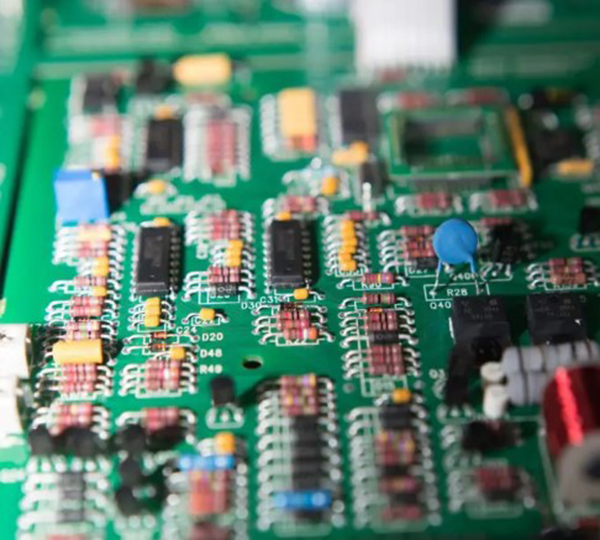Through Hole PCB Assembly Services

Through Hole (Thru-Hole) PCB Assembly Services
Thru-hole (or through-hole) technology involves drilling holes into a printed circuit board where leads can be attached. Compared to surface mounting, it is an older technology.
Despite the fact that it is an older process, there are benefits to thru-hole PCB assembly. The through-hole mounting process creates stronger bonds between a circuit board and its components, leading to products that are more durable and more resistant to shock and impacts.
Whether or not through-hole PCB assembly is the right choice — or the only choice — for your application will depend on a number of factors. EMSG can provide a thorough consultation that helps determine the best way to proceed, whether you are developing a prototype or manufacturing a product.
Benefits of Through-Hole Assembly
Today, surface mounting is the more common form of assembly in many diverse industries. However, PCB through-hole assembly still plays a vital role when it comes to building circuits meant for certain types of equipment — especially those that must undergo high levels of stress or operate at high speeds and extreme temperatures. The reason manufacturers use thru-hole PCB assembly for these types of products is the variety of benefits it offers, including:
- Strength of Bonds. Through-hole assembly involves sticking required components through a circuit board and then attaching them with a metal solder, which makes the connection between the circuit and its components strong. It’s crucial for all the parts of the circuit to remain intact as you use an electrical piece of equipment. That’s why its strength makes through-hole assembly the better option for high-risk electrical equipment than other methods such as surface mounting.
- Durability. Stronger bonds between the circuit and its components indicate better durability and the capacity to handle harsher conditions without substantial wear and tear or damage. If you’re looking for an assembly method suited to aerospace industries or the use of heavy machinery, thru-hole assembly is the ideal option and will hold up more easily than others. A durable electrical circuit will last a long time, perhaps even saving you more frequent replacement expenses.
- Reliability. The last thing you need is to spend your time worrying about whether or not your circuit assembly will hold each time you use a piece of machinery. When you use through-hole PCB assembly solutions, you can eliminate this uncertainty thanks to the reliability of drilling and soldering technology. and help maintain a high level of efficiency for your operations, which is necessary for a harsh or fast-paced environment.
Our Through-Hole PCB Assembly Services
Different applications demand different through-hole technology equipment. To better serve our diverse group of clients, EMSG has invested in some of the most advanced soldering and assembly tools on the market today. We are fully qualified to manufacture printed circuit board assemblies to the IPC-A-610 requirement in both leaded and RoHS specifications.
Depending on your project needs, we can provide either fully automated through-hole assembly or semi-automated through-hole assembly services for runs of up to 50,000 units.
Thanks to our production capabilities, we are often brought in at the prototyping stages of a project. However, we also perform electronic contract manufacturing and testing as necessary. Our clients include government contractors and private manufacturers, all of whom count on EMSG for fast turnaround times, excellent customer service and industry-leading engineering expertise. We are happy to provide initial consultations by phone or email or to meet with you in person.
Quality Standards for Through-Hole Assembly
When we provide our through-hole PCB assembly services to clients, we strive to adhere to IPC quality standards every time because we know how important it is to keep electrical components as safe and efficient as possible. It’s crucial to understand common defects in through-hole assembly PCBs, as well as how to avoid them and build strong, durable products.
Solder joint quality makes a huge difference in the overall quality of the through-hole assembled PCB structure. The soldering is what makes the product because it is the process that holds everything together — specifically, the board and its components. Defects of the solder joint include issues such as:
- Inaccurate placement of components
- Fractures
- Nonwetting
- Short Circuits
- Lead Protrusion
- Corrosion